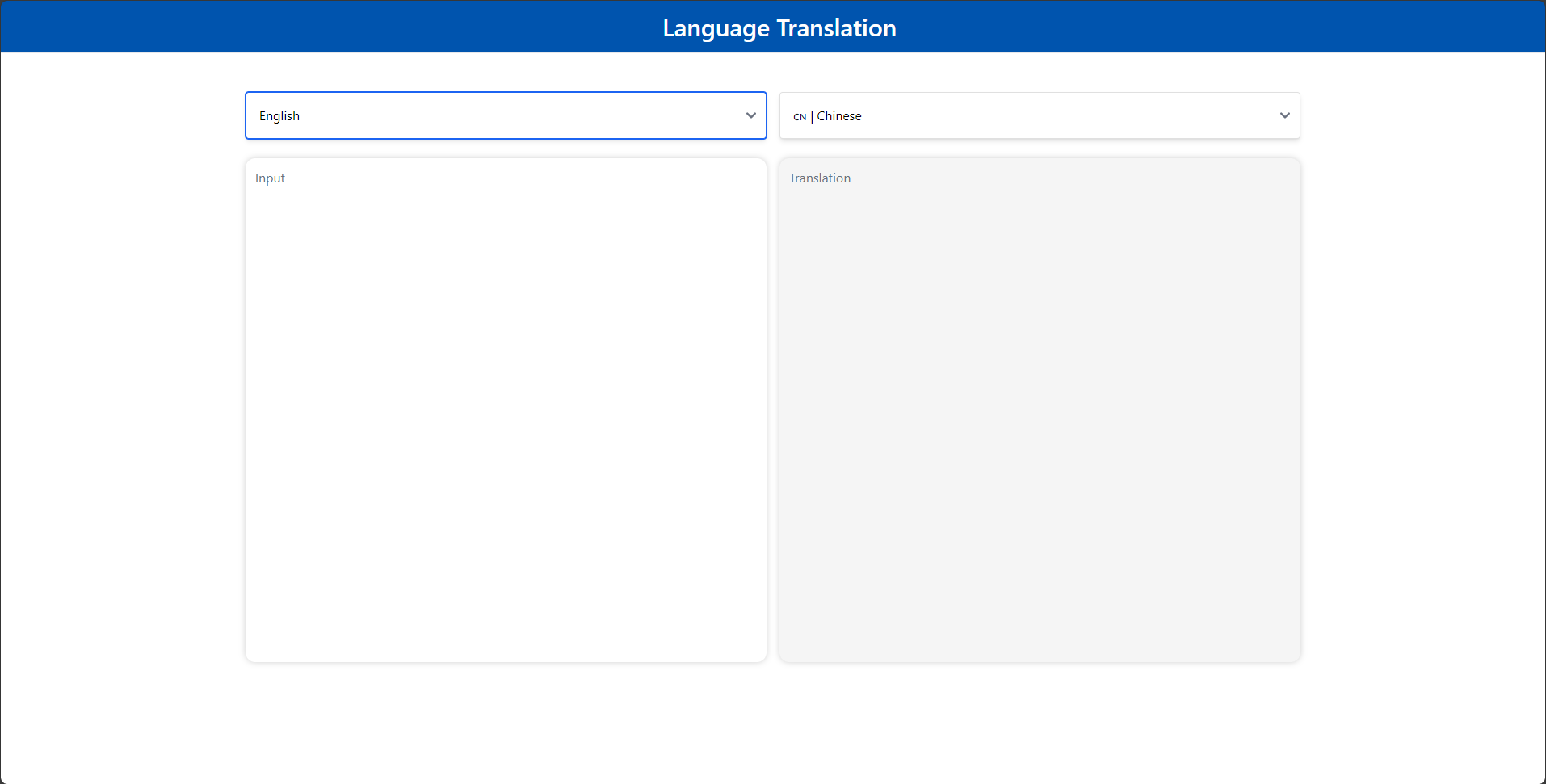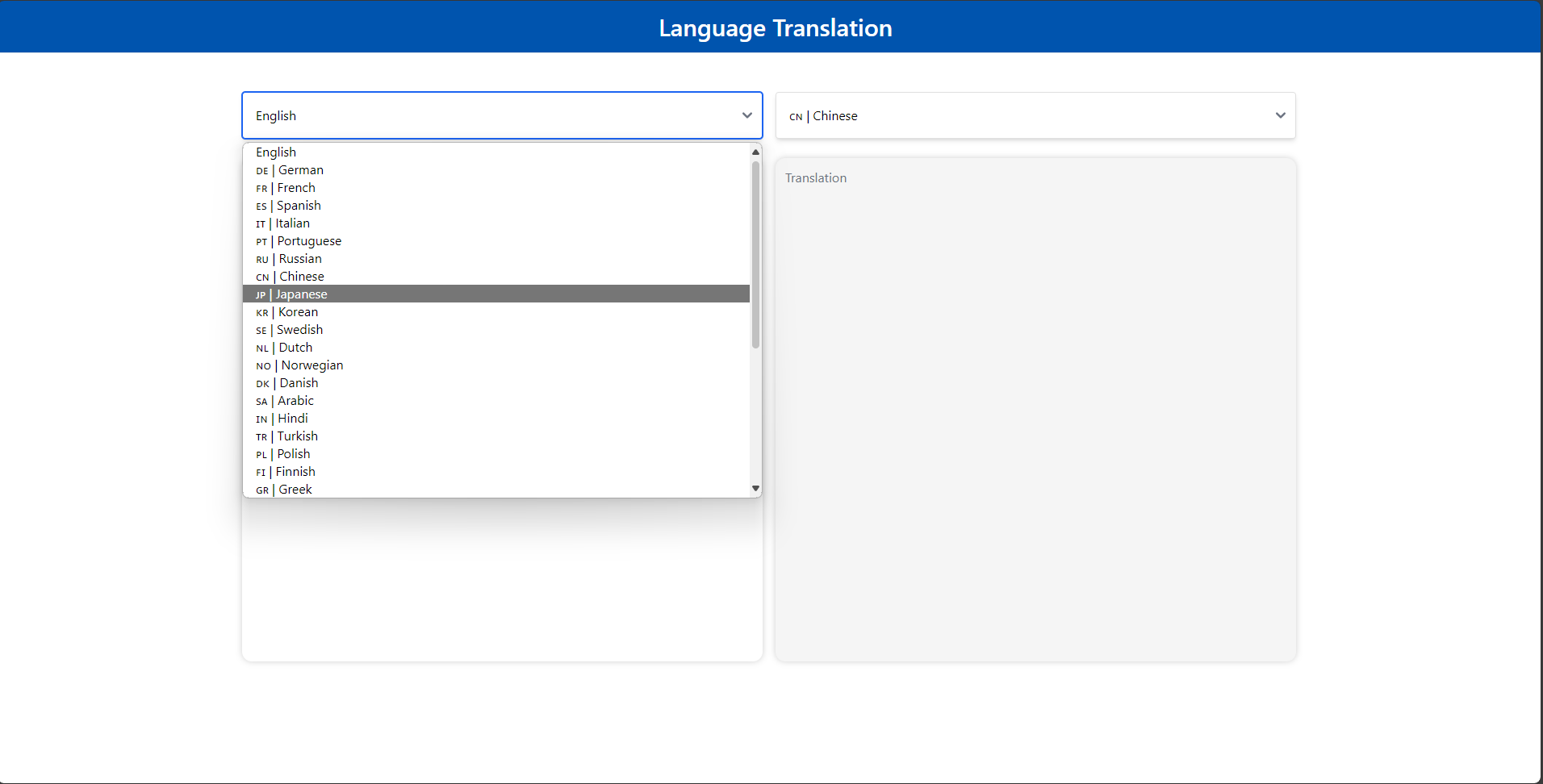Build MegaService of Translation on Gaudi¶
This document outlines the deployment process for a Translation application utilizing the GenAIComps microservice pipeline on Intel Gaudi server. The steps include Docker image creation, container deployment via Docker Compose, and service execution to integrate microservices such as We will publish the Docker images to Docker Hub, it will simplify the deployment process for this service.
🚀 Prepare Docker Images¶
For Docker Images, you have two options to prepare them.
Pull the docker images from docker hub.
More stable to use.
Will be automatically downloaded when using docker compose command.
Build the docker images from source.
Contain the latest new features.
Need to be manually build.
If you choose to pull docker images form docker hub, skip to Start Microservices part directly.
Follow the instructions below to build the docker images from source.
1. Build LLM Image¶
git clone https://github.com/opea-project/GenAIComps.git
cd GenAIComps
docker build -t opea/llm-tgi:latest --build-arg https_proxy=$https_proxy --build-arg http_proxy=$http_proxy -f comps/llms/text-generation/tgi/Dockerfile .
2. Build MegaService Docker Image¶
To construct the Mega Service, we utilize the GenAIComps microservice pipeline within the translation.py Python script. Build the MegaService Docker image using the command below:
git clone https://github.com/opea-project/GenAIExamples
cd GenAIExamples/Translation/docker
docker build -t opea/translation:latest --build-arg https_proxy=$https_proxy --build-arg http_proxy=$http_proxy -f Dockerfile .
3. Build UI Docker Image¶
Construct the frontend Docker image using the command below:
cd GenAIExamples/Translation/ui/
docker build -t opea/translation-ui:latest --build-arg https_proxy=$https_proxy --build-arg http_proxy=$http_proxy -f ./docker/Dockerfile .
4. Build Nginx Docker Image¶
cd GenAIComps
docker build -t opea/nginx:latest --build-arg https_proxy=$https_proxy --build-arg http_proxy=$http_proxy -f comps/nginx/Dockerfile .
Then run the command docker images, you will have the following four Docker Images:
opea/llm-tgi:latestopea/translation:latestopea/translation-ui:latestopea/nginx:latest
🚀 Start Microservices¶
Required Models¶
By default, the LLM model is set to a default value as listed below:
Service |
Model |
|---|---|
LLM |
haoranxu/ALMA-13B |
Change the LLM_MODEL_ID below for your needs.
Setup Environment Variables¶
Set the required environment variables:
# Example: host_ip="192.168.1.1" export host_ip="External_Public_IP" # Example: no_proxy="localhost, 127.0.0.1, 192.168.1.1" export no_proxy="Your_No_Proxy" export HUGGINGFACEHUB_API_TOKEN="Your_Huggingface_API_Token" # Example: NGINX_PORT=80 export NGINX_PORT=${your_nginx_port}
If you are in a proxy environment, also set the proxy-related environment variables:
export http_proxy="Your_HTTP_Proxy" export https_proxy="Your_HTTPs_Proxy"
Set up other environment variables:
cd ../../../ source set_env.sh
Start Microservice Docker Containers¶
docker compose up -d
Note: The docker images will be automatically downloaded from
docker hub:
docker pull opea/llm-tgi:latest
docker pull opea/translation:latest
docker pull opea/translation-ui:latest
docker pull opea/nginx:latest
Validate Microservices¶
TGI Service
curl http://${host_ip}:8008/generate \ -X POST \ -d '{"inputs":"What is Deep Learning?","parameters":{"max_new_tokens":64, "do_sample": true}}' \ -H 'Content-Type: application/json'
LLM Microservice
curl http://${host_ip}:9000/v1/chat/completions \ -X POST \ -d '{"query":"Translate this from Chinese to English:\nChinese: 我爱机器翻译。\nEnglish:"}' \ -H 'Content-Type: application/json'
MegaService
curl http://${host_ip}:8888/v1/translation -H "Content-Type: application/json" -d '{ "language_from": "Chinese","language_to": "English","source_language": "我爱机器翻译。"}'
Nginx Service
curl http://${host_ip}:${NGINX_PORT}/v1/translation \ -H "Content-Type: application/json" \ -d '{"language_from": "Chinese","language_to": "English","source_language": "我爱机器翻译。"}'
Following the validation of all aforementioned microservices, we are now prepared to construct a mega-service.
🚀 Launch the UI¶
Open this URL http://{host_ip}:5173 in your browser to access the frontend.

